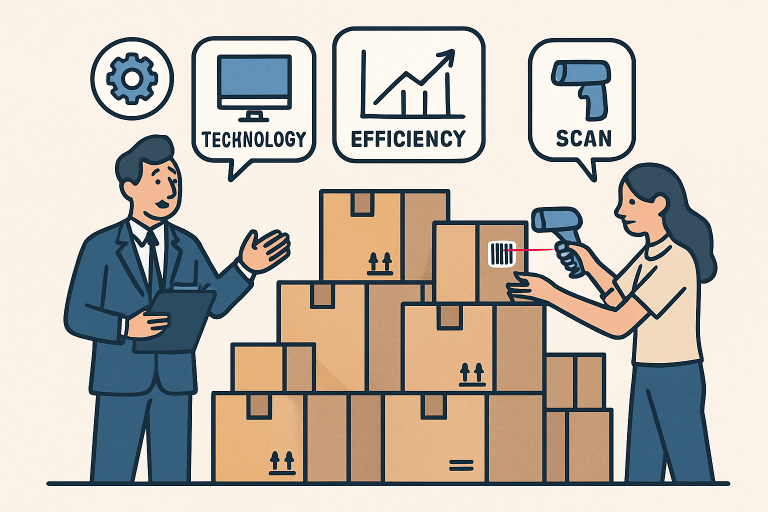Introduction
As businesses expand, efficient domestic shipping becomes vital in ensuring customer satisfaction and sustaining growth. Fast, reliable deliveries keep customers happy, build brand loyalty, and give businesses a competitive edge. Delayed or lost shipments can erode customer trust, so streamlining shipping operations is paramount for any company looking to scale. One proven way to optimize delivery processes and overcome common logistical challenges is by using dedicated services like intra-Canada freight, which allows companies to streamline operations while controlling costs and timelines. Leveraging specialized domestic shipping solutions can differentiate your business and make larger shipping volumes manageable as orders increase.
Shipping domestically allows businesses to establish a reputation for reliability, but only if their shipping strategies are fine-tuned for efficiency. The shifting landscape of e-commerce has increased consumer expectations for fast and transparent delivery, creating new logistical hurdles. From choosing the right carriers to integrating technology into logistics management, each step can directly impact overhead expenses and the overall customer experience. Adopting industry-best solutions transforms shipping from a cost center into a growth driver. By regularly reevaluating and updating shipping strategies, businesses can maintain operational flexibility and ensure a positive fulfillment experience at every stage.
Leverage Technology for Shipping Efficiency
Modern shipping software automates label creation, shipment tracking, and rate comparisons. By reducing the reliance on manual processes, these tools minimize human error and sharply increase order processing speed. Automation reduces manual mistakes, saves weekly hours, and dramatically improves accuracy. Equipped with real-time tracking, businesses can give customers up-to-the-minute updates while proactively managing delays or exceptions. This transparency reduces customer anxiety and lessens the customer service team’s workload. Integrations with e-commerce platforms and inventory management systems ensure that orders are processed smoothly without duplicated data entry or oversight. Additionally, batch processing features can further accelerate fulfillment by allowing multiple shipments to be managed simultaneously, which is particularly helpful during peak seasons or flash sales.
Selecting the Right Shipping Carriers
Careful carrier selection impacts both delivery speed and costs. Businesses should assess carriers for service reliability, coverage areas, and flexibility in handling volume spikes. It’s essential to look at past performance records and consider factors like the carrier’s track record for on-time deliveries and customer service responsiveness. Negotiating contracts using historical and projected shipping volumes can secure more favorable rates, particularly as order quantity grows. Establishing a strong relationship with your carriers can unlock exclusive deals, value-added services, and tailored logistical solutions. When shipping locally or within specific regions, consider regional carriers who may offer specialized advantages, including more granular route options or quicker delivery windows at reduced costs. Evaluating shipping options regularly ensures that businesses always have access to the best value without sacrificing quality or customer satisfaction.
Optimize Packaging Practices
Thoughtful packaging design lowers shipping fees and reduces damage rates. Using appropriately sized packaging avoids unnecessary dimensional weight fees and limits waste by preventing the use of excessive packing materials. Lightweight but sturdy packaging can also safeguard products during transit without adding substantial cost to each shipment. The proper packaging protects your products and helps convey a professional brand image upon delivery. Implementing standardized packaging dimensions helps businesses take advantage of carrier discounts on bulk shipments and minimizes packing time, further streamlining the shipping process. Businesses should periodically audit their packaging materials and methods, looking for ways to introduce eco-friendly options that may appeal to environmentally conscious customers and further reduce costs.
Implement Effective Inventory Management
Poorly managed inventories can cause order delays, cancellations, or excess stock sitting idle, and overstocking leads to wasted resources, while understocking risks disappointing customers with out-of-stock items. Employing real-time inventory tracking management solutions empowers teams to maintain optimal stock levels and respond quickly to sudden changes in demand. These systems integrate directly with e-commerce and order management platforms, providing valuable insight into what products are in high demand and when restocking is necessary. Businesses reduce risk and ensure smooth order fulfillment by leveraging automated alerts for low-stock and high-turnover products. Analyzing historical sales data can also aid demand forecasting, allowing companies to adapt procurement and stock decisions to match seasonal or market trends. Regular reconciliation of inventory records and periodic audits help prevent shrinkage and allow for proactive management of supply chain disruptions or unexpected surges in demand.
 Clear Communication of Shipping Policies
Clear Communication of Shipping Policies
Clear, upfront shipping policies protect your brand and set customer expectations from the first point of contact. Shipping costs, processing timelines, and available options should be easily visible on product pages and throughout checkout. Failing to communicate this information can result in abandoned carts or negative customer reviews. Customers value transparency — providing real-time shipment tracking and clear return procedures alleviates confusion and decreases the frequency of support inquiries regarding order status or missing packages. For instance, outlining expected delivery time frames and any potential delays due to weather or holidays can help manage expectations before an order is placed. For more insight on communicating policy changes effectively, see recent guidance by Inc.. Policy details should be easily found, regularly updated, and informed by customer feedback to improve clarity and service.
Monitor and Analyze Shipping Performance
Comprehensive data analysis is essential for continuous shipping improvement. Tracking metrics such as on-time delivery percentages, average shipping cost per order, and customer feedback lets businesses quickly identify areas to optimize. Using dashboards and automated reporting tools, decision makers can observe trends in delivery times, see which carriers are performing best, and address service failures before they escalate. Regularly reviewing these metrics means you can spot trends, remove bottlenecks, and adjust policies to maintain customer satisfaction and profitability. The insights gathered should be used to adjust contracts, reroute shipments, or trial new technologies as the business evolves. Businesses can benchmark performance against competitors or industry standards, ensuring their shipping strategy evolves as the company grows. An ongoing commitment to improvement will help maintain efficiency, lower costs, and encourage customer loyalty in an increasingly crowded marketplace.
Consider Outsourcing to Third-Party Logistics Providers
Third-party logistics (3PL) providers can introduce sophisticated logistics tech, economies of scale, and professional expertise. Selecting a reputable 3PL means businesses can access better shipping rates, advanced warehousing, and fulfillment solutions, but they may not have the resources to build internally. 3PLs manage warehousing, order fulfillment, and returns, allowing fast-growing companies to focus on core business activities. Outsourcing shipping also unlocks the latest shipping and packing technologies while affording flexibility to scale operations up or down as demand fluctuates. With third-party specialists handling logistics, businesses can more confidently extend their reach, serve new markets, and maintain service levels during periods of rapid growth or seasonality. Recent analysis by Forbes highlights how 3PL partnerships prompt cost savings and operational resilience in evolving markets.
Embracing strategic shipping practices — harnessing the power of technology, working with the right carriers, optimizing inventory and packaging, communicating clearly, and partnering with external specialists when needed — empowers growing businesses to provide efficient, affordable, and memorable delivery experiences for every customer. This agility boosts short-term efficiency and paves the way for long-term growth and loyalty in competitive domestic markets. Businesses that excel in shipping can convert logistical efficiency into a strong brand reputation and an expanding base of satisfied, repeat customers.






